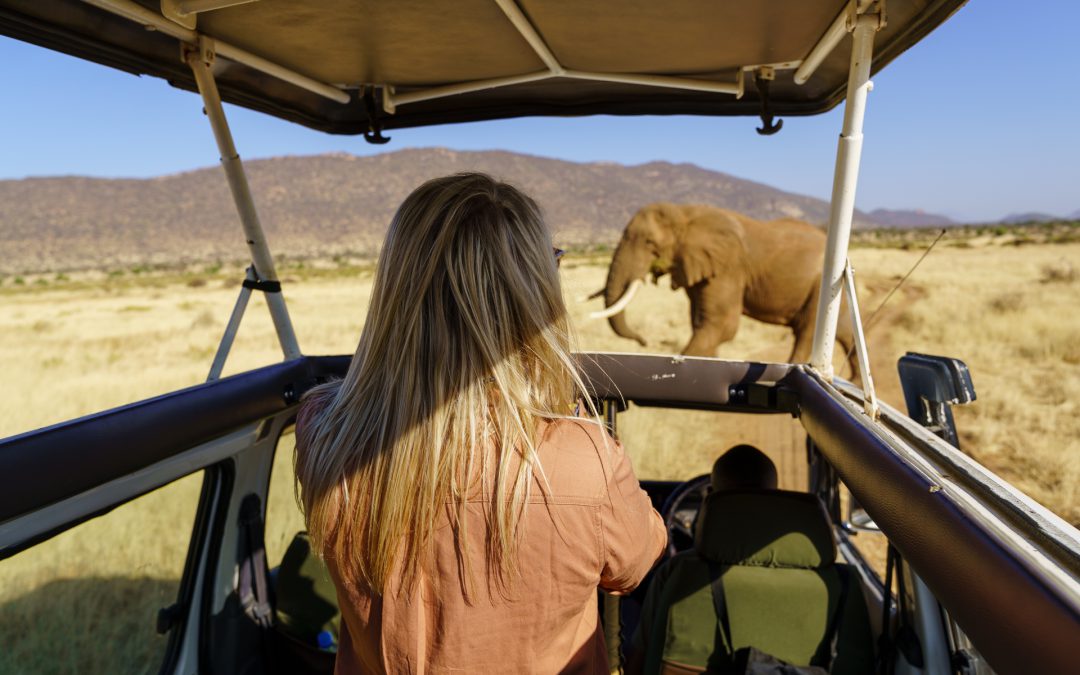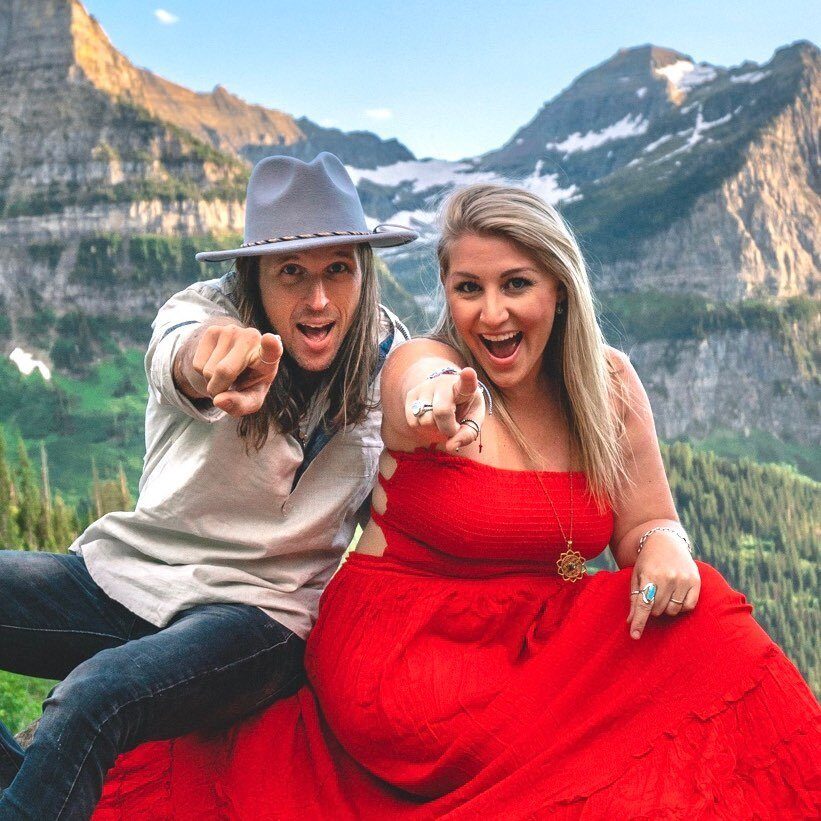
Our 10 Day Kenya Safari Itinerary
Day 1: Begin in Nairobi. Drive from Nairobi to Samburu. Approximately 7-8 hours. Nicely paved road. Evening game drive.
Day 2: Full day game drive in Samburu. Picnic brunch in the bush.
Day 3: Drive from Samburu to Ol Pejeta Conservancy. Approximately 3 hours. Paved road. Evening game drive, visit chimpanzee sanctuary.
Day 4: Drive from Ol Pejeta to Lake Nakuru. Approximately 4 hours. Paved Road. Evening game dive.
Day 5: Drive from Lake Nakuru to Masai Mara (Golden Triangle). Approximately 6-8 Hours. Very rough road – Still under construction. Evening game drive.
Day 6: Masai Mara. Full day game drive. Picnic lunch on the savannah.
Day 7: Masai Mara. Full day game drive. Picnic lunch on the savannah.
Day 8: Morning Game Drive. Drive from Masai Mara to Lake Naivasha. Approximately 5-6 hours. Very rough road – Still under construction. Evening boat ride on Lake Naivasha.
Day 9: Drive from Lake Naivasha to Amboseli. Approximately 6-7 hours. Nice paved road. Evening game drive.
Day 10: Morning game drive. Drive from Amboseli to Nairobi. Approximately 4-5 hours. Nice paved road.
Below, we have put together a breakdown of all the parks we visited, where we stayed, some of the animals we saw and highlights of each park.
Samburu
- Location: Central Kenya, north of the equator, on the south bank of the Uaso Nyiro River.
- Hotel: Ashnil Samburu Camp
- Environment: Mostly desert surroundings at the foot beautiful mountains in the distance, a small river valley creates a pocketed lush vegetated environment, also a portion of vast grassland.
- Animals saw: common zebra, Grevy zebra, reticulated giraffe, leopard, elephant, lioness and cubs, cheetah cub, dik-dik, warthog, Thompson gazelle, beisa oryx, long-neck gerenuk, and baboons.
- Highlights: Samburu National Reserve is a remote park located a considerable distance from Nairobi. Because of its remote location, it attracts far fewer visitors creating a serene and quiet experience with limited other safari vehicles on game drives. The reserve is renowned for its rare species of animals such as the long neck gerenuk, Grevy zebra, reticulated giraffe, and the beisa oryx.
Ol Pejeta
- Location: Central Kenya, roughly 70 miles north of Nairobi.
- Hotel: Sweetwater’s Tented Camp
- Environment: Vast open plains.
- Animals saw: White rhino, black rhino, chimpanzees, lioness, cape buffalo, warthogs, silver-backed jackal, baboons, impala, and Grant’s gazelle.
- Highlights: The Ol Pejeta Conservancy is a unique destination for a safari. Within the protected 90,000 acre conservancy there is the largest population of white and black rhino in all of Africa and one of the last true safe places for rhinos on the planet; they are protected day and night by armed guards that patrol the conservancy. Here visitors can see Baraka a blind black rhino that is closely guarded and taken care of by the conservancy. You can feed and actually touch him! It is an unforgettable moment to feel a living rhino. In addition to the rhinos, there is also the Sweetwaters Chimpanzee Sanctuary. The sanctuary is home to orphaned, abandoned and rescued chimpanzees from all over the world. When visiting the sanctuary visitors are separated from the chimpanzees by a fence for the safety of the guests and the chimpanzees alike. It is a beautiful place to get to see some of our closest relatives and the only place in Kenya to see them at all.
Lake Nakuru
- Location: Roughly 65 miles north-west of Nairobi.
- Hotel: Sarova Lion Hill Game Lodge
- Environment: One of the soda (alkaline) lakes located within the Great Rift Valley. The surroundings are plentiful in grassland and lush forested area.
- Animals saw: Rothschild giraffe, waterbuck, cape buffalo and a small flock of flamingoes.
- Highlights: At one time Lake Nakuru was the destination to see millions of flamingoes. When we visited, however, there were very few flamingos to be seen at all due to high water levels in the lake. We only saw small flocks far in the distance. Even without the flamingos though, the park is still beautiful and our evening game drive was capped off by one of the most beautiful sunsets we have ever seen. The greatest highlight from our visit here was not the animals though, it was a performance by some traditional Masai tribal dancers and musicians. savannah, now live today. Surprisingly, similar to how they lived in the past.
Masai Mara (Golden Triangle)
- Location: Roughly 100 miles southwest of Nairobi, Masai Mara is located on the southern border with Tanzania.
- Hotel: Mara Serena
- Environment: Vast gentle rolling grasslands with the Mara river snaking through the game reserve. This is the quintessential savannah grasslands wilderness
- Animals saw: Cheetah, lion, lioness, hippos, warthogs, Thompson’s gazelle, Grant gazelle, common zebra, wildebeest, hyena, gazelle, crocodiles, cape buffalo, waterbuck, giraffe, crocodiles, ostrich, and vultures.
- Highlights: Masai Mara is the crown jewel of Kenya. It is the most exceptional game reserve in the whole country, and if you were only able to visit one park, this would be the one to see. The wildlife here is as abundant as it is diverse. Here, there are hundreds of species all in one place. The great migration brings extraordinary herds of zebra and wildebeest to the area. It is the most massive migration on the planet! We saw all the big cats many times over, even a cheetah having his breakfast. The hippo pool provides an excellent opportunity to view hundreds of hippos all in one place as they float and grunt around in aqueous bliss. We seized the chance to fly over the grasslands at sunrise in a balloon and spotted countless animals as we peacefully drifted above. Lunch picnics on the savannah are also a must. Lastly, a visit to a nearby Masai tribe gave us a taste of how the tribal people, who once ruled the savannah, now live today. Surprisingly, similar to how they lived in the past.
Lake Naivasha
- Location: Roughly 40 miles northwest of Nairobi.
- Hotel: Sopa Lodge
- Environment: A freshwater lake, Naivasha, is located within the Great Rift Valley. It is immediately surrounded by marshy area and beyond that rich rolling grassland.
- Animals saw: Hippos, cape buffalo, fish eagle, giraffe, waterbucks, zebra, and eland.
- Highlights: Lake Nakuru offers many activities for visitors. We took a boat ride out on the river, fed a fish eagle and got a bit too close for comfort with some hippos. There is also Hell’s Gate National park, a popular place to visit as the rock formations there are captivating and are said to have inspired Pride Rock from the movie “The Lion King.” The greatest highlight for us during our visit though were the wild hippos that wandered freely around our hotel at night.
Amboseli
- Location: Roughly 75 miles southeast of Nairobi, near the border with Tanzania. Amboseli is the place to see the iconic views of Mount Kilimanjaro (which is actually located across the border in Tanzania)
- Hotel: Serena Amboseli
- Environment: Amboseli is an area of vast flatlands; part dusty desert in times of drought and part marshland in the rainy season. Far in the southern distance, late in the afternoon, Mount Kilimanjaro rises from the horizon.
- Animals saw: Numerous elephants, lioness, flamingoes, zebra, wildebeest, and gazelle.
- Highlights: Amboseli is home to the largest herds of elephants we had seen yet on safari. Seeing the juvenile and baby elephants with their family are moments that we will hold onto for a lifetime. They are such intelligent and interesting mammals to see interacting with each other. An unexpected highlight from our visit were the enormous flocks of flamingoes that gather in the shallows of Lake Amboseli; having not seen them at Lake Nakuru, we were grateful to experience them here. Beyond the animals though one of the most magnificent natural sights to see in all of Africa is the snow-capped Mount Kilimanjaro; the tallest point in Africa.

























